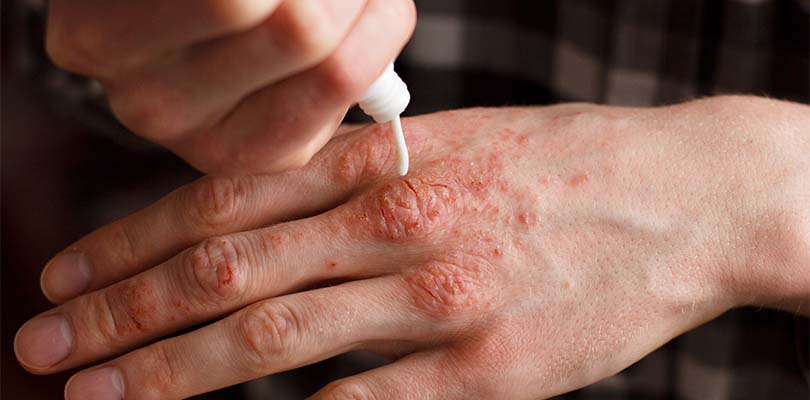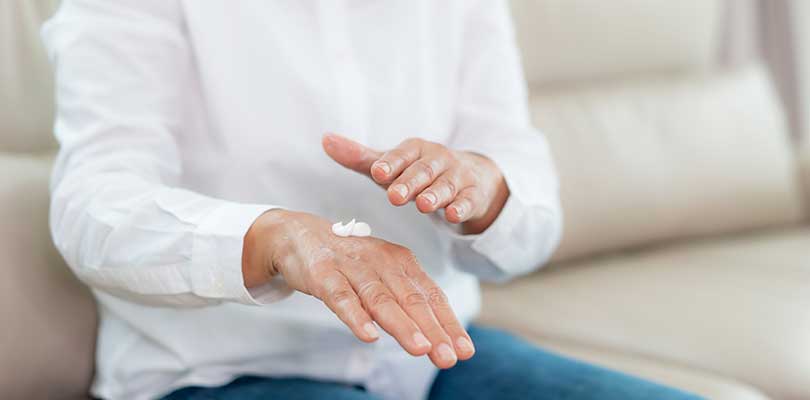Characterizing the Most Common Types of Arthritis
There are more than 100 different kinds of arthritis and other related diseases out there. Arthritis can affect anyone at any age, and is one of the leading causes of disability due to chronic pain. Since there are so many types of arthritis and people who can get it, this common condition is one that should be more understood.
General arthritis symptoms include pain, stiffness, and swelling in the joints. These factors may limit range of motion, but there can be windows of time where symptoms ease. Symptoms can be mild, moderate, or severe.
Two Main Categories of Arthritis
Arthritis conditions fall into one of two categories: degenerative or inflammatory. Degenerative arthritis diseases cause damage to the area surrounding a joint—commonly referred to as the “wear and tear” variety. Inflammatory arthritis conditions involve the immune system; they are autoimmune disorders. These disorders cause the body to mistakenly attack its own tissues, which cause issues or damage inside joints. A tell-tale sign of inflammatory arthritis is the presence of white blood cells in the joint fluid.
Despite its prevalence, arthritis isn’t completely understood. It can begin unexpectedly, masquerade as other diseases, and defy treatment. Sometimes symptoms are clear and visible (stiff, swollen joints are a hallmark of many types), but often the pain and discomfort won’t show up on the surface of the body.
If you suspect arthritis is the source of your pain, stiffness, and inflammation, the first step is a concise and accurate diagnosis.
Common Types of Arthritis
Septic Arthritis
Septic arthritis is a painful infection in the synovial fluid of a joint and joint tissues. The infection originates in other parts of the body and the germs travel through your bloodstream to reach the joint. Septic arthritis can also be the result of a penetrating injury which delivers germs directly into the joint. This type of arthritis commonly affects the knees, but can also impact the hips, shoulders, and other joints too.
Bacterial infections from septic arthritis can start as a skin infection or urinary tract infection (and also result from viruses and fungi). Your body reacts to the infection with inflammation, increasing pressure and a reduction of blood flow within the area, which only advances the damage to the joint.
The most common cause of septic arthritis is a bacterial infection with staphylococcus aureus (staph), which often causes skin infections. Other bacterial infections that may cause septic arthritis are haemophilus influenzae, gram negative bacilli, streptococci, and gonococci.
Prompt treatment is advised because this infection can quickly and severely damage the cartilage and bone within the joint. Treatment involves antibiotics which should be taken as soon as possible; if the septic arthritis is caused by a virus, you cannot treat it with medicine. You can also use medications (for pain and fever), physical therapy, or a splint on the joint to alleviate pain.
Too much pus can cause further damage, so the fluid can be drained from the joint with a needle or surgically (it may need to be done multiple times). Delayed treatment can result in joint degeneration and permanent damage.
Degenerative Arthritis (Osteoarthritis)
The most common type of arthritis, degenerative arthritis, is also known as osteoarthritis. This wear and tear variety of arthritis occurs when joint cartilage and the bone within the joint begin to wear away. The breakdown of cartilage that cushions the ends of the bones where they meet to form joints starts to become painful as the erosion worsens.
While any joint can be affected by this type of arthritis, degenerative arthritis usually develops in the weight-bearing joints of the knees, hips, and spine, or other joints like the hands, feet, and shoulders. Degenerative arthritis is common in adults over 65 but is not limited by age.
Degenerative arthritis can start with several things including a joint injury, the stress of obesity on the joints, a disease that damages the joint tissue or bone, a congenital misalignment of the bones, or loss of muscle strength to support a joint. Damage to a joint progresses faster than the body’s ability to repair itself, especially in older folks.
Treatment for degenerative arthritis is based on the severity of your symptoms. Any damage sustained by a joint cannot be reversed without surgery, but there are some things you can do to ease the discomfort.
Treatment in mild cases can be as simple as a heat or ice compress to the area. Resting can relieve the pain; take some time throughout the day to mindfully rest your affected areas. For more severe cases, injections and surgery are available if recommended by your doctor.
Reactive Arthritis
Reactive arthritis is a chronic form of arthritis that comes after infection of the genital, urinary, or gastrointestinal systems. Pain, stiffness, redness, or swelling in a joint as the lingering result of a previous infection that seem to have come out of nowhere.
The infection could have been from a variety of conditions, including salmonella or chlamydia. Usually only a single joint is involved, but over time, more joints may be affected. Reactive arthritis is often found in the joints of the lower limbs, but it’s not unheard of that it occurs in the upper limbs too. This type of arthritis typically affects those who are between 20 and 50 years old.
While reactive arthritis is not contagious, the infections where it originates might be. Certain types of bacteria cause reactive arthritis, but you may not readily connect your infection to arthritis because there is a lag time of several days to several weeks between the infection that caused the arthritis and the onset of arthritis symptoms. It may also be attributed to genes because people who get reactive arthritis often have the HLA-B27 gene.
As in most cases, treatment depends on the individual. Antibiotics will treat the infection itself and medication can reduce the inflammation. Rest is recommended to ease flare-ups and exercise helps strengthen muscles and improve joint function. There is no specific test to confirm reactive arthritis; a diagnosis requires a combination of a physical exam as well as other tests (like blood tests or x-rays).
Spinal Arthritis
Spinal arthritis, also called lumbar arthritis, is a very common type of arthritis that affects the spine. It's part of the wear and tear variety of arthritis that develops gradually, and involves the facet joints and disc spaces in the back part of the spine. Spinal arthritis is usually associated with spinal degeneration in older adults.
Spinal arthritis creates an atmosphere where the bones of the spine start to grind against each other with movement. Degenerative changes from tend to occur in the lowest joints of the lumbar spine. This inflammation may be caused by poor diet, obesity, and/or genetics.
Over-the-counter nonsteroidal anti-inflammatory drugs (NSAIDS) can ease pain and reduce inflammation. Prescription medications can be obtained from your doctor.
Lifestyle choices can also help in your treatment, such as weight loss to take the pressure off your joints or adding inflammation-reducing foods to your diet (like kale, walnuts, and blueberries). If you are a candidate, surgery is an option for severe cases as well.
Shoulder Arthritis
The shoulder has two joints, but shoulder arthritis usually refers to the glenohumeral joint (the major joint connecting the scapula and the humerus bones). Shoulder arthritis happens when the cartilage starts wearing down on the ball and/or socket sides of the shoulder joint.
When this happens, the cartilage gets soft and starts to develop cracks in the surface. Over time, the cartilage begins to deteriorate/flake, then eventually wears away to expose the bone’s surface. Without the lubricated cartilage surface, the bone rubs against bone and causes inflammation in the shoulder joint.
Shoulder arthritis can be caused by osteoarthritis (wear and tear) or rheumatoid arthritis (the body attacks its own healthy cells, including the linings of joints). Other causes may be issues such as rotator cuff tear, arthropathy, or avascular necrosis.
Nonoperative treatments include stretching (using range of motion exercises), lifestyle modifications, applications of heat or ice, and medication for pain relief. Physical therapy is recommended if the shoulder arthritis causes you to lose range of motion. There are other types of medical treatment options as well. Two types of injections are available for treatment: cortisone shots and hyaluronic acid.
Arthroscopic shoulder debridement is a minimally-invasive procedure that essentially cleans out the shoulder joint, which may provide pain relief but is not recommended if you have bone-on-bone traction. If the nonoperative options don’t work for you, shoulder replacement surgery may be your only viable option.
Rheumatoid Arthritis
As an autoimmune disease, rheumatoid arthritis is a type of inflammatory arthritis, and another one of the more common varieties of arthritis. The body attacks the synovial fluid within the joints. This is the fluid that lubricates and cushions the joints during movement.
Rheumatoid arthritis can affect any joint, but is often found in the hands, wrists, and feet. Some cases will see an impact to internal organs as well, such as the eyes, lungs, or heart. This disease typically impacts joints on both sides of the body and can lead to deformities in the affected joints.
Like other varieties of arthritis, symptoms include redness, pain, swelling, or the feeling of heat in the lining of a joint. Unlike other types of arthritis, symptoms of rheumatoid arthritis may include fever, fatigue, and loss of appetite. The pain may last for months, but there may be periods where you are symptom-free. Untreated rheumatoid arthritis has significant morning stiffness that can last from half an hour to several hours.
Treatment will depend on age, overall health, and the severity of the disease. Anti-inflammatory drugs and other immune-controlling medications can help ease symptoms, along with physical therapy or surgery.
Psoriatic Arthritis
Another type of inflammatory arthritis, psoriatic arthritis affects between 10 and 30 percent of people with psoriasis. In this autoimmune disease, psoriasis of the skin is linked to joint inflammation. Skin issues usually present before the joint problems start.
Psoriatic arthritis is common in the outer joints of the arms and legs; you will see it occur around the heels, on the sides of the elbow, and the outer side of the hips. In addition to inflammation in the joints, there may also be back and neck aches, swollen fingers or toes, and pain in places where tendons and ligaments attach to the bone.
Treatment includes medication, exercise, rest, techniques for joint protection, and surgery, if required. There is no cure for psoriatic arthritis but starting the right treatment early enough will have a big impact on how you can manage the disease.
What is psoriatic arthritis? It's a type of arthritis that affects people who suffer from psoriasis. Here is how it's diagnosed, along with common symptoms.
Fibromyalgia
This mysterious pain syndrome resembles other arthritic conditions more than you might imagine. Morning stiffness and terrible fatigue are common complaints, but other symptoms can vary widely and stretch into every corner of your daily life.
Headaches, sleep problems, IBS, tingling in the extremities and cognitive challenges are just a few of the distressful symptoms that come with fibromyalgia. Although these can be difficult to measure, the American College of Rheumatology has developed criteria to help diagnose fibromyalgia, including a widespread pain index to measure the degree of pain, and a minimum duration of the symptoms (they must occur for at least three consecutive months).
If you’ve been diagnosed with another type of arthritis, you could also be suffering from fibromyalgia. In many cases, lupus, fibromyalgia, rheumatoid arthritis, and ankylosing spondylitis often occur together. The other arthritic condition causes the inflammation, heat, and redness you see around the joints — the musculoskeletal pain of fibromyalgia is very real, but it brings no visible symptoms.
Gout
Gout is a type of inflammatory arthritis caused by too much uric acid in the body that is not properly flushed out by the kidneys. Urate crystals build up inside the joints and surrounding tissue causing painful flare-ups that can last for weeks.
Gout most often affects the big toe with redness, swelling, and intense pain but the uric acid can also accumulate in the ankle, knee, foot, hand, fingertips, wrist, or elbow. The buildup of urate crystals can start to form hard bumps beneath the skin. Recurring gout attacks can cause damage to new joints or permanent damage in joints where gout has already occurred.
Gout is tricky, as flare-ups can be followed by long periods without any symptoms; you may think that your gout is cured when it is just dormant. The disease becomes more severe over time, but treatment with medication, healthy diet, and other lifestyle changes, can help prevent gout.
Ankylosing Spondylitis
Ankylosing spondylitis is an autoimmune condition that attacks locations where tendons and ligaments attach to bone—primarily within the spine and the joints that attach the pelvis to the spine.
This type of inflammatory arthritis causes bone erosion, and the body tries to mend the damaged sites by forming new bone. The creation of new bone may result in bone fusion and cause deformation of the spine and dysfunction to the shoulders and hips.
Arthritic symptoms of pain and stiffness are present, especially in the lower back. This condition is most common in Caucasian males. A vast majority of those affected have the HLA-B27 gene, which means that heredity may play a part in who is at risk of ankylosing spondylitis.
Treatment should start immediately upon diagnosis to keep the joints mobile and the spine flexible. A combination of medication and exercise are usually recommended.
Tendinitis and Bursitis
Unlike OA (which targets the cartilage), and ankylosing spondylitis (which fuses bones), tendinitis and bursitis are soft-tissue rheumatic diseases. This means the connective tissues and cushioning compounds in the joints become inflamed rather than the hard, immobile parts of the joint.
When the small fluid-filled sacs in your joints (called the bursae) become inflamed, you may notice a painful lump. Most often, bursitis occurs in the shoulder, elbow, hip, and knee — joints that perform frequent, repetitive movements.
As the name implies, tendinitis targets tendons, the flexible cord of strong tissue that connects muscles to bones. Although tendinitis can result from overuse or injury, it can also be a rheumatic disease, and develop without an evident source of trauma.
Juvenile Arthritis
While it is not a separate disease in and of itself, juvenile arthritis (also known as pediatric rheumatic disease) affects children that are 16 and younger. It can be either degenerative or inflammatory arthritis, depending on the type.
Juvenile arthritis serves as an umbrella term for several types of arthritis that affect children—the most common being juvenile idiopathic arthritis, which is made up of six subtypes of autoimmune disorders that can impact children’s joints.
Some types of juvenile arthritis may impact the musculoskeletal system, eyes, skin, muscles, and gastrointestinal tract. Indicators of juvenile arthritis are constantly sore joints, swelling, exhaustion, stiffness, and fever.
As there is also no cure for juvenile arthritis, the objective for treatment is to relieve pain and inflammation through medication, diet, and exercise.
Polymyalgia Rheumatica
Like fibromyalgia, polymyalgia rheumatica brings widespread achiness and stiffness, but only people older than 50 are at risk of developing the disorder. Since it doesn’t cause visibly swollen or red joints, it can be difficult to discover and properly diagnose.
The condition typically manifests in white seniors over the age of 70. The pain and stiffness commonly occurs in the upper arms, neck, thighs and lower back. Like other forms of arthritis, symptoms are generally worse in the morning, and it can take some time to restore your mobility enough to get on with your day. Luckily, polymyalgia rheumatica often responds very well to corticosteroid treatment.
Lupus
Lupus is considered a less common type of arthritis with cases ranging from mild to severe. It is an autoimmune disease that can affect the skin, joints, heart, kidneys, lungs, blood, and brain. Due to the various locations lupus occurs, it affects many types of connective tissue throughout the body.
Symptoms also include chest pain, fatigue, fever, mouth sores, sensitivity to sunlight, swollen lymph nodes, hair loss, unease, and sometimes a butterfly-shaped rash on the face, in addition to typical arthritis symptoms.
Diagnosis of this disease can be difficult, as lupus symptoms often mirror those of other ailments. This inflammatory disease can affect anyone at any age but is found most commonly in women in their childbearing years with African or Asian ancestry.
While there is not a cure for lupus at the moment, treatment involves both medication and lifestyle changes which can include nonsteroidal anti-inflammatory drugs, corticosteroids, immunosuppressive agents, clean diet, rest, and regular (low-impact) exercises.
Types of Arthritis Overview
Arthritis is a widespread condition with many varieties, and its affiliated diseases only make the list longer. Popular recommendations for treatment for most of these conditions includes switching to a healthier lifestyle. Taking care of your joint health now won’t prevent arthritis from happening, but it may slow down the effect of the condition in the future.







